 Astronomer James Christy, conducting observations of Pluto at the United States Naval Observatory, discovers a bulging shape present in some photos he’s taken of Pluto, but absent in others. Though the find meets with some skepticism, he has discovered the largest moon of Pluto, Charon, which has a mass of over 50% that of its parent body. Orbiting at only 11,000 miles from Pluto’s surface, Charon has a radius of 750 miles. Within 20 years, closer telescopic examination (including observations using the Hubble Space Telescope) confirm that Charon is separate from Pluto. Since the two bodies are relatively similar in mass, one doesn’t actually orbit the other; rather, they both orbit a center of mass – a barycenter – that lies close to, but not within, Pluto. Further observations in the 21st century lead to the unexpected discovery of four further satellites of Pluto.
Astronomer James Christy, conducting observations of Pluto at the United States Naval Observatory, discovers a bulging shape present in some photos he’s taken of Pluto, but absent in others. Though the find meets with some skepticism, he has discovered the largest moon of Pluto, Charon, which has a mass of over 50% that of its parent body. Orbiting at only 11,000 miles from Pluto’s surface, Charon has a radius of 750 miles. Within 20 years, closer telescopic examination (including observations using the Hubble Space Telescope) confirm that Charon is separate from Pluto. Since the two bodies are relatively similar in mass, one doesn’t actually orbit the other; rather, they both orbit a center of mass – a barycenter – that lies close to, but not within, Pluto. Further observations in the 21st century lead to the unexpected discovery of four further satellites of Pluto.
 NASA launches Landsat 3, the latest in a constellation of satellites derived from the design of the experimental Nimbus weather satellites. This is the last Landsat to use the Nimbus framework, and the last to be managed exclusively by NASA; Landsat 3 remains in service through 1983.
NASA launches Landsat 3, the latest in a constellation of satellites derived from the design of the experimental Nimbus weather satellites. This is the last Landsat to use the Nimbus framework, and the last to be managed exclusively by NASA; Landsat 3 remains in service through 1983.
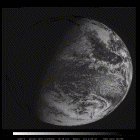 NOAA’s GOES-3 Geostationary Operational Environmental Satellite is launched from Cape Canaveral into a geosynchronous orbit over the Indian Ocean, replacing the first operational GOES satellite, GOES-1. GOES-3 will serve as a working weather satellite for over a decade, ultimately decommissioned from that role in 1989 and then serving as a communications satellite for the Pacific Ocean region and Antarctica, a role it continues to fill over 35 years later.
NOAA’s GOES-3 Geostationary Operational Environmental Satellite is launched from Cape Canaveral into a geosynchronous orbit over the Indian Ocean, replacing the first operational GOES satellite, GOES-1. GOES-3 will serve as a working weather satellite for over a decade, ultimately decommissioned from that role in 1989 and then serving as a communications satellite for the Pacific Ocean region and Antarctica, a role it continues to fill over 35 years later. Astronomer James Christy, conducting observations of Pluto at the United States Naval Observatory, discovers a bulging shape present in some photos he’s taken of Pluto, but absent in others. Though the find meets with some skepticism, he has discovered the largest moon of Pluto, Charon, which has a mass of over 50% that of its parent body. Orbiting at only 11,000 miles from Pluto’s surface, Charon has a radius of 750 miles. Within 20 years, closer telescopic examination (including observations using the Hubble Space Telescope) confirm that Charon is separate from Pluto. Since the two bodies are relatively similar in mass, one doesn’t actually orbit the other; rather, they both orbit a center of mass – a barycenter – that lies close to, but not within, Pluto. Further observations in the 21st century lead to the unexpected discovery of four further satellites of Pluto.
Astronomer James Christy, conducting observations of Pluto at the United States Naval Observatory, discovers a bulging shape present in some photos he’s taken of Pluto, but absent in others. Though the find meets with some skepticism, he has discovered the largest moon of Pluto, Charon, which has a mass of over 50% that of its parent body. Orbiting at only 11,000 miles from Pluto’s surface, Charon has a radius of 750 miles. Within 20 years, closer telescopic examination (including observations using the Hubble Space Telescope) confirm that Charon is separate from Pluto. Since the two bodies are relatively similar in mass, one doesn’t actually orbit the other; rather, they both orbit a center of mass – a barycenter – that lies close to, but not within, Pluto. Further observations in the 21st century lead to the unexpected discovery of four further satellites of Pluto.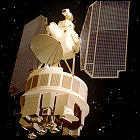 NASA launches the Nimbus 7 satellite, the last of a series of experimental satellites designed to test new weather and climate detection technologies. This satellite tests more precise attitude control systems and instruments designed to monitor the layer of ozone within Earth’s atmosphere. Many of the technologies developed in the Nimbus series are transferred not to future weather satellites, but to future Landsat Earth observation satellites.
NASA launches the Nimbus 7 satellite, the last of a series of experimental satellites designed to test new weather and climate detection technologies. This satellite tests more precise attitude control systems and instruments designed to monitor the layer of ozone within Earth’s atmosphere. Many of the technologies developed in the Nimbus series are transferred not to future weather satellites, but to future Landsat Earth observation satellites. NASA launches the second High Energy Astronomy Observatory satellite, which is given the nickname “Einstein” when it enters service. HEAO-2 is a dedicated X-ray telescope with unprecedented sensitivity and accuracy, and will remain in service through March 1982, re-entering Earth’s atmosphere a week afterward.
NASA launches the second High Energy Astronomy Observatory satellite, which is given the nickname “Einstein” when it enters service. HEAO-2 is a dedicated X-ray telescope with unprecedented sensitivity and accuracy, and will remain in service through March 1982, re-entering Earth’s atmosphere a week afterward. Following five years of research and development, Netherlands-based Philips Electronics demonstrates one of the earliest iterations of the compact audio disc, an optical disc in the now-familiar five-inch size which can be read by a CD player with a laser diode. Philips and Sony, who have been developing the new medium in parallel, will later join forces and create a standard for audio compact discs in 1980, introducing the CD as a consumer product in the early 1980s despite resistance from record companies with a vested interest in vinyl LPs (and only a begrudging acceptance of audio cassettes). In addition to higher audio fidelity and a more durable medium (an optical disc encased in a plastic shell, protecting the physical surface that is so often damaged with vinyl), the CD and its player can also compensate for any damage suffered by the disc through error correction.
Following five years of research and development, Netherlands-based Philips Electronics demonstrates one of the earliest iterations of the compact audio disc, an optical disc in the now-familiar five-inch size which can be read by a CD player with a laser diode. Philips and Sony, who have been developing the new medium in parallel, will later join forces and create a standard for audio compact discs in 1980, introducing the CD as a consumer product in the early 1980s despite resistance from record companies with a vested interest in vinyl LPs (and only a begrudging acceptance of audio cassettes). In addition to higher audio fidelity and a more durable medium (an optical disc encased in a plastic shell, protecting the physical surface that is so often damaged with vinyl), the CD and its player can also compensate for any damage suffered by the disc through error correction.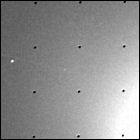 Tiny Adrastea, a small, asteroid-like moon of Jupiter, is discovered in photos returned by Voyager 2 during its flyby of the planet. Adrastea orbits along the outer edge of Jupiter’s ring system, and is likely to be the body from which material for that ring is ejected. Its close orbit carries it around the planet at a speed faster than Jupiter’s rotation, one of the few bodies in the solar system locked into such a fast orbit.
Tiny Adrastea, a small, asteroid-like moon of Jupiter, is discovered in photos returned by Voyager 2 during its flyby of the planet. Adrastea orbits along the outer edge of Jupiter’s ring system, and is likely to be the body from which material for that ring is ejected. Its close orbit carries it around the planet at a speed faster than Jupiter’s rotation, one of the few bodies in the solar system locked into such a fast orbit. NASA launches the third and final High Energy Astronomy Observatory satellite into Earth orbit, where it begins studying gamma ray sources and the nature of cosmic rays. There is also an experiment package designed to detect heavy atomic nuclei. HEAO-3 will remain in service through May 1981, and it will re-enter Earth’s atmosphere in December of that year.
NASA launches the third and final High Energy Astronomy Observatory satellite into Earth orbit, where it begins studying gamma ray sources and the nature of cosmic rays. There is also an experiment package designed to detect heavy atomic nuclei. HEAO-3 will remain in service through May 1981, and it will re-enter Earth’s atmosphere in December of that year.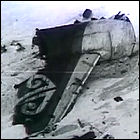
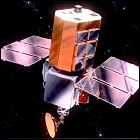 NASA launches the unmanned Solar Maximum Mission satellite atop a Delta 3910 rocket, to study cyclical solar flare activity from Earth orbit. Built by Fairchild and relying on a magnetic reaction wheel system to maintain precise aim at the sun, “Solar Max” suffers malfunctions in orbit, and will be able to carry out only limited observations by November 1980. In 1984, Solar Max will become the first satellite to be
NASA launches the unmanned Solar Maximum Mission satellite atop a Delta 3910 rocket, to study cyclical solar flare activity from Earth orbit. Built by Fairchild and relying on a magnetic reaction wheel system to maintain precise aim at the sun, “Solar Max” suffers malfunctions in orbit, and will be able to carry out only limited observations by November 1980. In 1984, Solar Max will become the first satellite to be  Following eleven days of precursory earthquake activity, Mt. St. Helens, a volcano in Washington which has been dormant for over a century, emits a small eruption of ash and steam. Similar eruptions continue on an hourly basis, though the frequency will gradually diminsh through April. This activity lasts barely a month before ending, at least for a week or two. The north face of Mt. St. Helens begins bulging noticeably, and emergency planners fight to keep sightseers away from the mountain while drawing up evacuation plans for nearby populated areas. Some locals vow to remain despite possible evacuation orders.
Following eleven days of precursory earthquake activity, Mt. St. Helens, a volcano in Washington which has been dormant for over a century, emits a small eruption of ash and steam. Similar eruptions continue on an hourly basis, though the frequency will gradually diminsh through April. This activity lasts barely a month before ending, at least for a week or two. The north face of Mt. St. Helens begins bulging noticeably, and emergency planners fight to keep sightseers away from the mountain while drawing up evacuation plans for nearby populated areas. Some locals vow to remain despite possible evacuation orders. Folllowing a lull in its recent frequent earthquake and minor volcanic activity, the summit of Mt. St. Helens in Washington disappears in a massive landslide, releasing a powerful (300mph) lateral explosion that flattens nearby forest land ahead of a devastating release of debris and snowmelt mud known as a lahar. Within an hour, with the summit crater exposed, the remaining magma stored under Mt. St. Helens surges upward, resulting in a massive eruption from the summit, lasting nine hours and wiping out hundreds of square miles of forest and killing dozens of people, including geologists who had been on station to monitor the volcano’s activity. Following the eruption, Mt. St. Helens is over 1,000 feet shorter, its peak replaced by a mile-wide crater. This is the first significant volcanic eruption on the American mainland since 1915.
Folllowing a lull in its recent frequent earthquake and minor volcanic activity, the summit of Mt. St. Helens in Washington disappears in a massive landslide, releasing a powerful (300mph) lateral explosion that flattens nearby forest land ahead of a devastating release of debris and snowmelt mud known as a lahar. Within an hour, with the summit crater exposed, the remaining magma stored under Mt. St. Helens surges upward, resulting in a massive eruption from the summit, lasting nine hours and wiping out hundreds of square miles of forest and killing dozens of people, including geologists who had been on station to monitor the volcano’s activity. Following the eruption, Mt. St. Helens is over 1,000 feet shorter, its peak replaced by a mile-wide crater. This is the first significant volcanic eruption on the American mainland since 1915.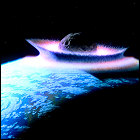 In the journal Science, in an article titled “Extraterrestrial Cause for the Cretaceous-Tertiary Extinction”, Nobel-Prize-winning physicist Luis Alvarez and his son, geologist Walter Alvarez, propose their theory that the 110-mile-wide Chicxulub Crater discovered in the past few decades on the northern tip of the Yucatan Peninsula in Mexico is evidence of a large asteroid collision with Earth, resulting in the widespread death of the dinosaurs 65 million years before the modern day. A contentious peer review of the published theory follows, with many opposing theories proposed, though the Chicxulub hypothesis is eventually accepted as the “smoking gun” that killed the dinosaurs (the theory of an asteroid collision with Earth causing the extinction had been in circulation since the 1950s; the Alvarez theory is the first to point to a specific geological feature as evidence).
In the journal Science, in an article titled “Extraterrestrial Cause for the Cretaceous-Tertiary Extinction”, Nobel-Prize-winning physicist Luis Alvarez and his son, geologist Walter Alvarez, propose their theory that the 110-mile-wide Chicxulub Crater discovered in the past few decades on the northern tip of the Yucatan Peninsula in Mexico is evidence of a large asteroid collision with Earth, resulting in the widespread death of the dinosaurs 65 million years before the modern day. A contentious peer review of the published theory follows, with many opposing theories proposed, though the Chicxulub hypothesis is eventually accepted as the “smoking gun” that killed the dinosaurs (the theory of an asteroid collision with Earth causing the extinction had been in circulation since the 1950s; the Alvarez theory is the first to point to a specific geological feature as evidence). NOAA’s GOES-4 Geostationary Operational Environmental Satellite is launched from Cape Canaveral into a geosynchronous orbit over 98 degrees west longitude on Earth, a position which will change several times over GOES-4’s career until 1988, allowing it to monitor weather over the continental United States and Europe. In 1988, GOES-4 will become the first satellite to be boosted into a “graveyard” parking orbit using its remaining propellant, leaving it intact in a higher-than-geostationary orbit to avoid collisions with operational satellites.
NOAA’s GOES-4 Geostationary Operational Environmental Satellite is launched from Cape Canaveral into a geosynchronous orbit over 98 degrees west longitude on Earth, a position which will change several times over GOES-4’s career until 1988, allowing it to monitor weather over the continental United States and Europe. In 1988, GOES-4 will become the first satellite to be boosted into a “graveyard” parking orbit using its remaining propellant, leaving it intact in a higher-than-geostationary orbit to avoid collisions with operational satellites.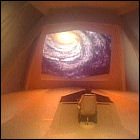 Carl Sagan’s groundbreaking science documentary series
Carl Sagan’s groundbreaking science documentary series 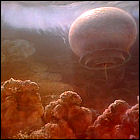 The second episode of Carl Sagan’s groundbreaking science documentary series Cosmos premieres on PBS. A popular history of science and scientific theory vs. tradition and superstition, segueing into Sagan’s field of expertise (astrophysics), Cosmos is a major milestone in American documentary filmmaking and the popularization of science and the scientific method (and makes an instant celebrity out of Sagan).
The second episode of Carl Sagan’s groundbreaking science documentary series Cosmos premieres on PBS. A popular history of science and scientific theory vs. tradition and superstition, segueing into Sagan’s field of expertise (astrophysics), Cosmos is a major milestone in American documentary filmmaking and the popularization of science and the scientific method (and makes an instant celebrity out of Sagan).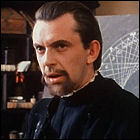 The third episode of Carl Sagan’s groundbreaking science documentary series Cosmos premieres on PBS. A popular history of science and scientific theory vs. tradition and superstition, segueing into Sagan’s field of expertise (astrophysics), Cosmos is a major milestone in American documentary filmmaking and the popularization of science and the scientific method (and makes an instant celebrity out of Sagan).
The third episode of Carl Sagan’s groundbreaking science documentary series Cosmos premieres on PBS. A popular history of science and scientific theory vs. tradition and superstition, segueing into Sagan’s field of expertise (astrophysics), Cosmos is a major milestone in American documentary filmmaking and the popularization of science and the scientific method (and makes an instant celebrity out of Sagan).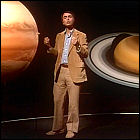 The fourth episode of Carl Sagan’s groundbreaking science documentary series Cosmos premieres on PBS. A popular history of science and scientific theory vs. tradition and superstition, segueing into Sagan’s field of expertise (astrophysics), Cosmos is a major milestone in American documentary filmmaking and the popularization of science and the scientific method (and makes an instant celebrity out of Sagan).
The fourth episode of Carl Sagan’s groundbreaking science documentary series Cosmos premieres on PBS. A popular history of science and scientific theory vs. tradition and superstition, segueing into Sagan’s field of expertise (astrophysics), Cosmos is a major milestone in American documentary filmmaking and the popularization of science and the scientific method (and makes an instant celebrity out of Sagan). The fifth episode of Carl Sagan’s groundbreaking science documentary series Cosmos premieres on PBS. A popular history of science and scientific theory vs. tradition and superstition, segueing into Sagan’s field of expertise (astrophysics), Cosmos is a major milestone in American documentary filmmaking and the popularization of science and the scientific method (and makes an instant celebrity out of Sagan).
The fifth episode of Carl Sagan’s groundbreaking science documentary series Cosmos premieres on PBS. A popular history of science and scientific theory vs. tradition and superstition, segueing into Sagan’s field of expertise (astrophysics), Cosmos is a major milestone in American documentary filmmaking and the popularization of science and the scientific method (and makes an instant celebrity out of Sagan). The sixth episode of Carl Sagan’s groundbreaking science documentary series Cosmos premieres on PBS. A popular history of science and scientific theory vs. tradition and superstition, segueing into Sagan’s field of expertise (astrophysics), Cosmos is a major milestone in American documentary filmmaking and the popularization of science and the scientific method (and makes an instant celebrity out of Sagan).
The sixth episode of Carl Sagan’s groundbreaking science documentary series Cosmos premieres on PBS. A popular history of science and scientific theory vs. tradition and superstition, segueing into Sagan’s field of expertise (astrophysics), Cosmos is a major milestone in American documentary filmmaking and the popularization of science and the scientific method (and makes an instant celebrity out of Sagan). The seventh episode of Carl Sagan’s groundbreaking science documentary series Cosmos premieres on PBS. A popular history of science and scientific theory vs. tradition and superstition, segueing into Sagan’s field of expertise (astrophysics), Cosmos is a major milestone in American documentary filmmaking and the popularization of science and the scientific method (and makes an instant celebrity out of Sagan).
The seventh episode of Carl Sagan’s groundbreaking science documentary series Cosmos premieres on PBS. A popular history of science and scientific theory vs. tradition and superstition, segueing into Sagan’s field of expertise (astrophysics), Cosmos is a major milestone in American documentary filmmaking and the popularization of science and the scientific method (and makes an instant celebrity out of Sagan). The eighth episode of Carl Sagan’s groundbreaking science documentary series Cosmos premieres on PBS. A popular history of science and scientific theory vs. tradition and superstition, segueing into Sagan’s field of expertise (astrophysics), Cosmos is a major milestone in American documentary filmmaking and the popularization of science and the scientific method (and makes an instant celebrity out of Sagan).
The eighth episode of Carl Sagan’s groundbreaking science documentary series Cosmos premieres on PBS. A popular history of science and scientific theory vs. tradition and superstition, segueing into Sagan’s field of expertise (astrophysics), Cosmos is a major milestone in American documentary filmmaking and the popularization of science and the scientific method (and makes an instant celebrity out of Sagan). The ninth episode of Carl Sagan’s groundbreaking science documentary series Cosmos premieres on PBS. A popular history of science and scientific theory vs. tradition and superstition, segueing into Sagan’s field of expertise (astrophysics), Cosmos is a major milestone in American documentary filmmaking and the popularization of science and the scientific method (and makes an instant celebrity out of Sagan).
The ninth episode of Carl Sagan’s groundbreaking science documentary series Cosmos premieres on PBS. A popular history of science and scientific theory vs. tradition and superstition, segueing into Sagan’s field of expertise (astrophysics), Cosmos is a major milestone in American documentary filmmaking and the popularization of science and the scientific method (and makes an instant celebrity out of Sagan). The tenth episode of Carl Sagan’s groundbreaking science documentary series Cosmos premieres on PBS. A popular history of science and scientific theory vs. tradition and superstition, segueing into Sagan’s field of expertise (astrophysics), Cosmos is a major milestone in American documentary filmmaking and the popularization of science and the scientific method (and makes an instant celebrity out of Sagan).
The tenth episode of Carl Sagan’s groundbreaking science documentary series Cosmos premieres on PBS. A popular history of science and scientific theory vs. tradition and superstition, segueing into Sagan’s field of expertise (astrophysics), Cosmos is a major milestone in American documentary filmmaking and the popularization of science and the scientific method (and makes an instant celebrity out of Sagan).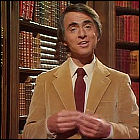 The 11th episode of Carl Sagan’s groundbreaking science documentary series Cosmos premieres on PBS. A popular history of science and scientific theory vs. tradition and superstition, segueing into Sagan’s field of expertise (astrophysics), Cosmos is a major milestone in American documentary filmmaking and the popularization of science and the scientific method (and makes an instant celebrity out of Sagan).
The 11th episode of Carl Sagan’s groundbreaking science documentary series Cosmos premieres on PBS. A popular history of science and scientific theory vs. tradition and superstition, segueing into Sagan’s field of expertise (astrophysics), Cosmos is a major milestone in American documentary filmmaking and the popularization of science and the scientific method (and makes an instant celebrity out of Sagan).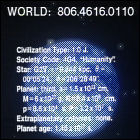 The 12th episode of Carl Sagan’s groundbreaking science documentary series Cosmos premieres on PBS. A popular history of science and scientific theory vs. tradition and superstition, segueing into Sagan’s field of expertise (astrophysics), Cosmos is a major milestone in American documentary filmmaking and the popularization of science and the scientific method (and makes an instant celebrity out of Sagan).
The 12th episode of Carl Sagan’s groundbreaking science documentary series Cosmos premieres on PBS. A popular history of science and scientific theory vs. tradition and superstition, segueing into Sagan’s field of expertise (astrophysics), Cosmos is a major milestone in American documentary filmmaking and the popularization of science and the scientific method (and makes an instant celebrity out of Sagan). The 13th and final episode of Carl Sagan’s groundbreaking science documentary series Cosmos premieres on PBS. A popular history of science and scientific theory vs. tradition and superstition, segueing into Sagan’s field of expertise (astrophysics), Cosmos is a major milestone in American documentary filmmaking and the popularization of science and the scientific method (and makes an instant celebrity out of Sagan).
The 13th and final episode of Carl Sagan’s groundbreaking science documentary series Cosmos premieres on PBS. A popular history of science and scientific theory vs. tradition and superstition, segueing into Sagan’s field of expertise (astrophysics), Cosmos is a major milestone in American documentary filmmaking and the popularization of science and the scientific method (and makes an instant celebrity out of Sagan). Researchers and storm chasers from the National Weather Service’s Severe Storms Laboratory in Norman, Oklahoma make the first field deployment of the 300-pound TOtable Tornado Observatory (TOTO) instrument package, a modified oil drum filled with meteorological instrumentation which is intended to be placed directly into the path of an oncoming tornado. The first deployment, in north Texas, yields no data – no tornado forms for TOTO to study. Over the next five years, despite several “close calls”, TOTO is never successfully placed in the direct path of a tornado. The TOTO program is discontinued in 1987.
Researchers and storm chasers from the National Weather Service’s Severe Storms Laboratory in Norman, Oklahoma make the first field deployment of the 300-pound TOtable Tornado Observatory (TOTO) instrument package, a modified oil drum filled with meteorological instrumentation which is intended to be placed directly into the path of an oncoming tornado. The first deployment, in north Texas, yields no data – no tornado forms for TOTO to study. Over the next five years, despite several “close calls”, TOTO is never successfully placed in the direct path of a tornado. The TOTO program is discontinued in 1987.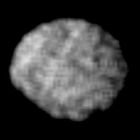 A team of American astronomers discovers what they believe is a third moon of Neptune from ground-based telescope observations, but S/1981N1 isn’t seen again for several years, so the discovery is left in the “unconfirmed” category…until it is next seen by Voyager 2 in 1989, confirming the original sighting many years later. In 1991, the International Astronomical Union will name this moon Larissa. (Voyager 2 photo of Larissa shown)
A team of American astronomers discovers what they believe is a third moon of Neptune from ground-based telescope observations, but S/1981N1 isn’t seen again for several years, so the discovery is left in the “unconfirmed” category…until it is next seen by Voyager 2 in 1989, confirming the original sighting many years later. In 1991, the International Astronomical Union will name this moon Larissa. (Voyager 2 photo of Larissa shown)